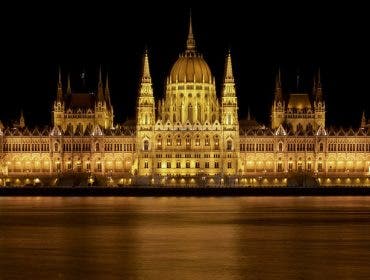What makes a user-collector film camera? It’s a camera worthy of cherishing as a beautiful object and an exquisite example of technology, but also great for taking analog pictures. Showcase collectors display their beautiful vintage cameras in neat rows in glass showcases, but user collectors like me take pictures with almost all their film classics at least occasionally, and usually much more often than that.
If you think you might qualify as a user-collector, here are five outstanding classic and modern film cameras that should be on your short list. All of them take readily available 35mm or 120-size roll film, which should be available for at least the remainder of this century.

Leica M3
This brilliantly innovative design reset the trajectory of Leica and established it as the finest interchangeable–lens rangefinder camera ever made. Introduced in 1954, it remained in production until 1966. Early models feature double stroke lever-type film advance; later models provide single stroke advance. All M3s incorporate a Leica M bayonet mount, and a superb combined coincident-type 0.91x range-viewfinder with projected, parallax-compensating auto-indexing frame lines for 50mm, 90mm, and 135mm lenses. The frame-lines can also be manually selected to preview the composition, and there’s a built-in mechanical self-timer. About 220,000 M3s were produced over its long production run.
Price range (used): Double-stroke, $850-$1,200, body only, chrome: $950-$1,400 single-stroke, body only.

Rolleiflex MX EVS
This iconic non-interchangeable-lens 2-1/4-inch square (6x6cm format) twin-lens reflex of the mid ‘50s is the “modern” version of the Rolleiflex Automat of 1937, one of the most brilliantly innovative camera designs of all time. It provides automatic first-frame positioning (no red window), film advance and automatic frame counting via a single-stroke film-wind crank, and automatic parallax correction over the entire focusing range using an ingenious shifting frame under the focusing screen. The MX EVS added modern coated lenses (a 75mm f/3.5 Carl Zeiss Tessar or Schneider Xenar), a Synchro-Compur 1-1/500 sec plus B shutter with full flash sync and built-in self-timer, EVS settings on the aperture and shutter speed dials, and brighter focusing screens.
The result? A timeless classic that offers exceptional imaging performance plus a gorgeous, instantly identifiable form factor. Later Rolleiflex models with Zeiss Planar and Schneider Xenotar lenses are also great user-collectibles but they carry premium prices.
Price range: $300-650 with Tessar or Xenar lens.

Canon 7s
Made in Japan by Canon from 1965-1967, it was the last and most technically advanced iteration of the company’s long line of top-quality interchangeable lens rangefinder 35s using the classic 39mm Leica screw-thread mount. The 7s, like the Canon 7, also has an outer bayonet mount that was only used with the super-speed 50mm f/0.95 Canon lens.
Other features: Metal foil focal-plane shutter with single top-mounted dial with speeds from 1 to 1/1000 sec, built-in coupled CdS meter with film speed settings only up to ASA 400, projected parallax-compensating frame lines for 35, 50, 85, 100, and 135mm lenses in the large, high-magnification (0.8x) range/viewfinder, and single stroke lever-type film advance.
The very last version, commonly known as the Canon 7sZ, has a larger rewind crank and improvements to the range-viewfinder. Either version is a superb and timeless user-collectible.
Price range (body only): Canon 7s: $275-450, 7sZ, $1,000-$1200

Mamiyaflex C330, C330f, and C330S Professional
The final and most advanced versions of Mamiya’s long line of interchangeable film twin-lens reflex cameras, the C330 was introduced in 1969 for the professional and enthusiast markets, was lighter than the previous model C33, and was succeeded by C330f and C330S, both of which incorporated additional improvements.
The C330 captures 2-1/4 x 2-1/4 images 120 or 220 roll film, has a self-cocking single-throw 360° film-wind crank with double-exposure prevention and interchangeable finder screens. The redesigned parallax selector includes settings for 55mm, 65mm, and 250mm lens sets, and there are two lockable shutter releases. The C330f released in 1972 added a focus-lock lever and a revised parallax selector knob, and the last Mamiyaflex, the C330S of 1983, is lighter still, and has a single-action waist-level finder that’s easier and faster to open.
Any C330 is a superb classic TLR and the entire lens line, including the outstanding 5-element 80mm f/2.8 Mamiya-Sekor normal prime, delivers imaging that’s up to the highest professional standards.
Price range: C330, $200-400; C330f, $300-450; C330S $500-600, all with 80mm f/2.8 lens.

Konica IIIA
The Konica IIIA, introduced in 1958, is probably the best non-interchangeable-lens 35mm rangefinder camera ever made. Major upgrade: a brilliant high-magnification 1:1 (life-size) range/viewfinder, with projected bright-line frame lines that adjust automatically to correct for parallax error and for field size (the decreased coverage angle at closer focusing distances.) This larger finder necessitated a higher top cover, and a redesigned, stepped and folding rewind crank, but the unique vertical double-stroke film advance system was retained. The lens on the original IIIA is a superlative 48mm f/2 Hexanon in Seikosha-MXL shutter with speeds of 1-1/500 sec plus B, and built-in LV system.
Starting in July 1958 the photographers had the option of a 50mm f/1.8 Hexanon in the same Seikosha-MXL shutter at modest additional cost. Both models were in production until the 48mm f/2 was phased out. The 50mm f/1.8 Hexanon is said to be a tad sharper than the smaller 48mm f/2, but the latter is more in keeping with the camera’s exquisite form facto.
Price range: $130-200 with 48mm f/2 or 50mm f/1.8 lens






